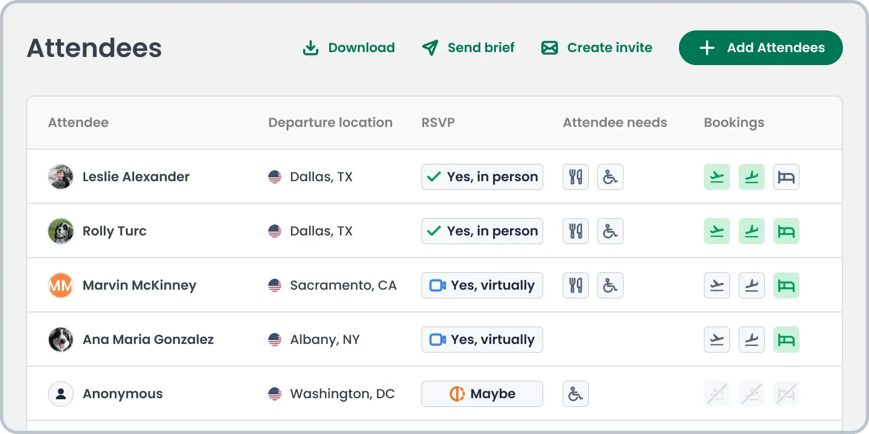6 Spooky Myths About Meeting Planning
Meeting planning myths have a way of creeping up on even the most experienced planners. They start small — “anyone can plan a meeting,” “we can just meet virtually,” “where we meet doesn’t matter” — but before you know it, those assumptions turn into spooky projects.
For Executive Assistants and meeting planners, these myths don’t just cause frustration; they derail timelines, budgets, and trust.
Banish the myth: 6 meeting planning myths
This Halloween, we look at the six most common meeting planning myths and misconceptions that keep planners up at night — and share the truths that debunk every single one.
1. “We don't need to meet face-to-face, there's no real value in that.”
Virtual meetings have their time and place, but in-person meetings build trust, accelerate decision-making, and strengthen the company culture in ways screens can’t. In fact, research shows that teams brainstorming face-to-face generate 15–20% more ideas than those meeting virtually. For meetings where alignment, creativity, and collaboration are key, there’s no substitute for being in the same room.
Banish the myth: In-person meetings are an investment in clarity, connection, and momentum.

2. “It's too expensive.”
Yes, travel and logistical costs can add up, but poor alignment, disengaged teams, and stalled projects cost far more. When you use the right technology, it’s easier to balance budget with experience and ensure every dollar supports meeting goals.
With TROOP, you can compare destinations based on cost, travel time, and attendee convenience — making every decision informed, not instinctive. From estimating meeting costs to managing attendee details, TROOP takes the manual work out of planning and turns it into data-backed decisions you can defend with confidence.
Banish the myth: Strategic planning turns meeting costs into measurable returns.
3. “We should cram everything into the agenda, it’s efficient.”
Overstuffed agendas don’t save time, they drain energy. When every minute is packed, attendees leave feeling overwhelmed and rushed instead of engaged. The most productive meetings prioritize outcomes, build in space for discussion, and give people time to connect.
Banish the myth: Less is more. A focused agenda leads to stronger alignment and better results.
4. “You don't need technology for meeting in-person.”
Even when teams gather face-to-face, the right tools play a crucial role before anyone steps into the room. Platforms like TROOP simplify every stage of planning so you can focus on the people.
And in-person doesn’t mean low-tech. Once everyone’s together, technology continues to support connection — helping you capture insights, collect feedback, and keep the momentum going long after the meeting ends.
Banish the myth: Technology doesn’t replace human connection, it enhances it.

5. “If you’re meeting in-person, decisions will happen naturally.”
Just because people are together doesn’t mean progress will follow. Real alignment comes from structure and intention: clear objectives, strong facilitation, and pre-meeting communication. When expectations and goals are set early and clearly, you turn attendance into real action.
Banish the myth: Decisions don’t just happen, they’re built with purpose.
6. “Anyone can plan a meeting.”
Meeting planning looks easy. Until you have to do it.
Managing logistics, budgets, and people dynamics requires foresight, flexibility, and a strategic mindset. It’s a craft that Executive Assistants and meeting planners master through first-hand experience.
Banish the myth: Effective meeting planning is part logistics, part leadership — and all about driving results.
Say goodbye to meeting planning myths
When it comes to meeting planning, the real freight isn’t the work but the misconceptions that make it harder than it needs to be. By focusing on facts and leveraging the right tools, you can replace stress with structure and chaos with clarity.
